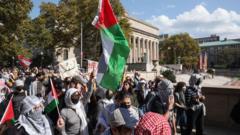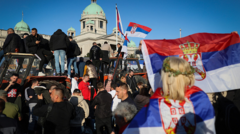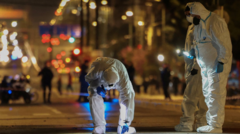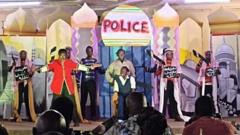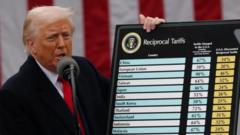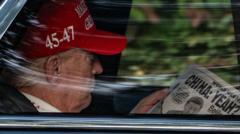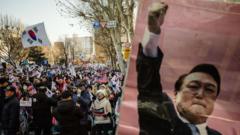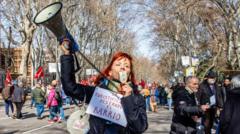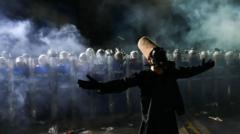Recent protests in Serbia against President Aleksandar Vucic have caught the attention of state-controlled television, which has drawn the ire of the governing party for reporting on these demonstrations without framing them negatively, challenging the government's long-held media influence.
Serbian State Media Faces Backlash After Covering Protests Against President Vucic

Serbian State Media Faces Backlash After Covering Protests Against President Vucic
The Serbian public broadcaster has shifted its stance, reporting on mass protests that were previously ignored, leading to tension with the ruling party.
When mass protests erupted in Novi Sad, Serbia, culminating in demonstrators blocking three main bridges over the Danube River, the response from the ruling Serbian Progressive Party was notable. Despite historically having a firm grip on media narratives, the government found itself in a rare position of public backlash directed at its state-controlled broadcaster, Radio Television Serbia (RTS).
Prior to this weekend, RTS had largely overlooked the ongoing student-led protests, which have been taking place for over three months, primarily aimed at holding President Aleksandar Vucic accountable for escalating issues, including the tragic fatalities linked to transportation negligence in the city three months ago. However, RTS dramatically altered its editorial course, placing coverage of the protests front and center in its news bulletins.
In an unusual turn of events, the coverage was reported factually, abstaining from the typical rhetoric that branded protesters as treasonous or foreign agents. This shift prompted an official statement from Vucic's ruling party condemning the broadcaster’s “scandalous reporting.” The party accused RTS of grossly misusing its journalistic role in favor of those attempting to undermine Serbia's constitutional order.
Such media control under President Vucic has been fundamental to maintaining power for over 12 years, allowing his administration to navigate dissent by attacking the credibility of its opposition. This media strategy has generally succeeded in framing protest movements negatively; however, the current coverage may signify a tipping point in Serbia’s political discourse as protests grow in visibility.
While it is still early to predict the long-term impacts of this media shift, the protests' prominence and the ruling party's criticism of RTS's new tone suggest potential cracks in the government's ability to tightly regulate public perception. As thousands gather to voice their dissent, the political landscape in Serbia continues to evolve amidst growing criticism and societal unrest.


